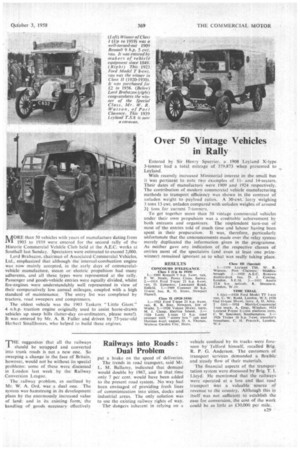Railways into Roads : Dual Problem
Page 101

If you've noticed an error in this article please click here to report it so we can fix it.
THE suggestion that all the railways should be scrapped and converted into trunk roads is not a new one. So sweeping a change in the face of Britain, however, would not be without its special problems; some of these were discussed in London last week by the Railway Conversion League.
The railway problem, as outlined by Mr. W. A. Ord, was a dual one. The system was hamstrung in its development • plans by the enormously increased value of land: and in its existing form, the handling or goods necessary effectively
put a brake on the speed of deliveries.
The trends in road transport, said Mr. L. M. Ballamy, indicated that demand would double by 1967, and in that time only 7 per cent, would have been added to the present road system. No way had been envisaged of providing fresh lines of communication into cities, docks and industrial areas. The only solution was to use the existing railway rights of way.
• Thedangers inherent in relying on a vehicle confined by its tracks were foreseen by Telford himself, recalled Brig. R. P. G. Anderson. The customers of transport services demanded a flexible and steady tloW of their materials.
The financial aspects of the transportation system were. discussed by Brig. T. I. Lloyd. He mentioned that the railways were operated at a loss and that road transport Was a valuable source of revenue to the country. Although this in itself, was not sufficient to establish the case for conversion, the cost of the work could be as little as 00,000 per mile.
















































































































































































